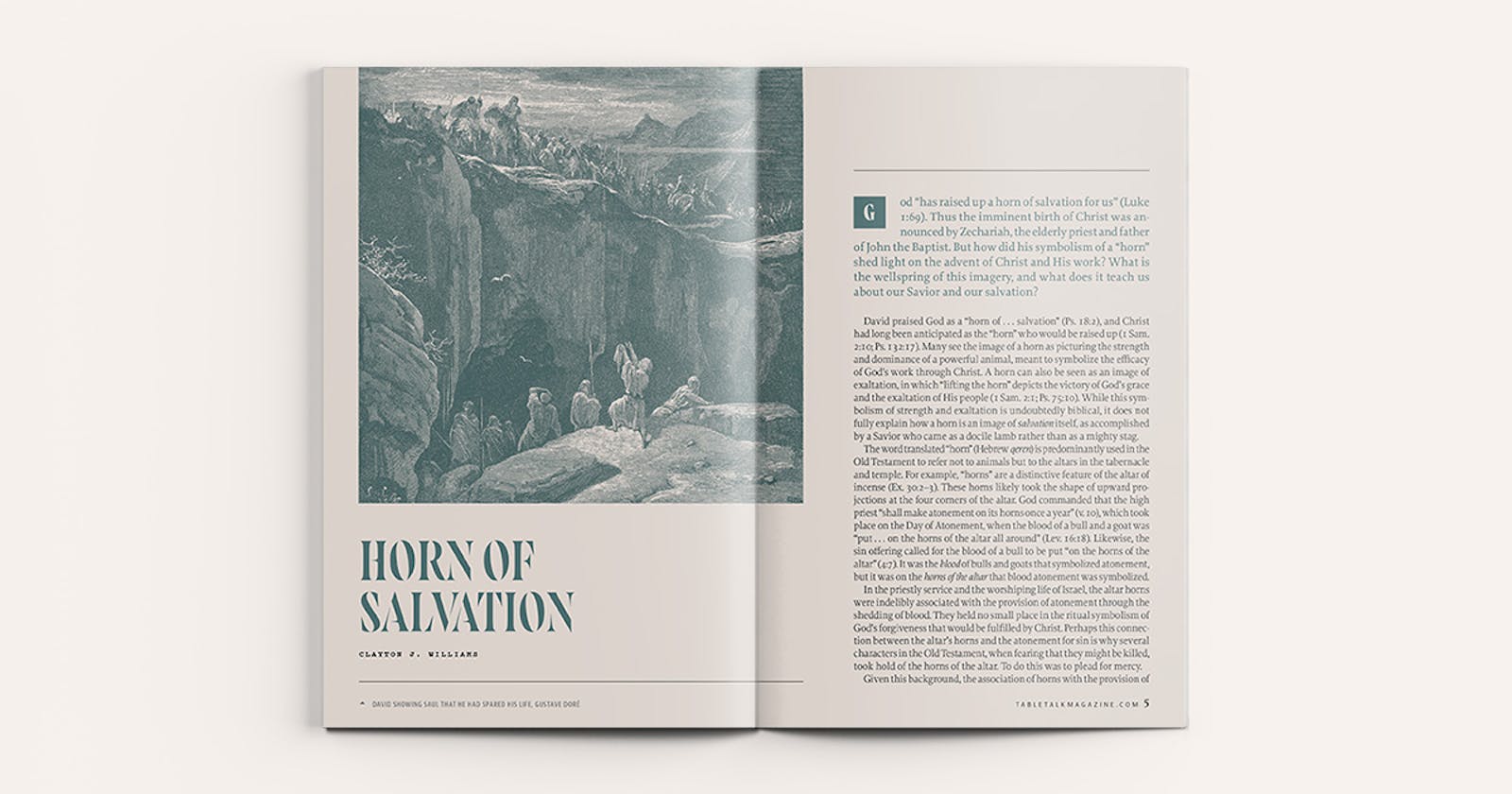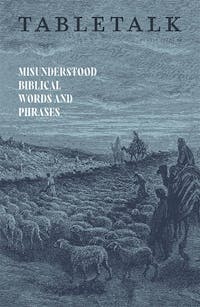
Request your free, three-month trial to Tabletalk magazine. You’ll receive the print issue monthly and gain immediate digital access to decades of archives. This trial is risk-free. No credit card required.
Try Tabletalk NowAlready receive Tabletalk magazine every month?
Verify your email address to gain unlimited access.
God “has raised up a horn of salvation for us” (Luke 1:69). Thus the imminent birth of Christ was announced by Zechariah, the elderly priest and father of John the Baptist. But how did his symbolism of a “horn” shed light on the advent of Christ and His work? What is the wellspring of this imagery, and what does it teach us about our Savior and our salvation?
David praised God as a “horn of . . . salvation” (Ps. 18:2), and Christ had long been anticipated as the “horn” who would be raised up (1 Sam. 2:10; Ps. 132:17). Many see the image of a horn as picturing the strength and dominance of a powerful animal, meant to symbolize the efficacy of God’s work through Christ. A horn can also be seen as an image of exaltation, in which “lifting the horn” depicts the victory of God’s grace and the exaltation of His people (1 Sam. 2:1; Ps. 75:10). While this symbolism of strength and exaltation is undoubtedly biblical, it does not fully explain how a horn is an image of salvation itself, as accomplished by a Savior who came as a docile lamb rather than as a mighty stag.
The word translated “horn” (Hebrew qeren) is predominantly used in the Old Testament to refer not to animals but to the altars in the tabernacle and temple. For example, “horns” are a distinctive feature of the altar of incense (Ex. 30:2–3). These horns likely took the shape of upward projections at the four corners of the altar. God commanded that the high priest “shall make atonement on its horns once a year” (Ex. 30:10), which took place on the Day of Atonement, when the blood of a bull and a goat was “put . . . on the horns of the altar all around” (Lev. 16:18). Likewise, the sin offering called for the blood of a bull to be put “on the horns of the altar” (Lev. 4:7). It was the blood of bulls and goats that symbolized atonement, but it was on the horns of the altar that blood atonement was symbolized.
In the priestly service and the worshiping life of Israel, the altar horns were indelibly associated with the provision of atonement through the shedding of blood. They held no small place in the ritual symbolism of God’s forgiveness that would be fulfilled by Christ. Perhaps this connection between the altar’s horns and the atonement for sin is why several characters in the Old Testament, when fearing that they might be killed, took hold of the horns of the altar. To do this was to plead for mercy.

Given this background, the association of horns with the provision of atonement would have been a natural one for Zechariah the priest. Thus, it seems significant that when Gabriel appeared to Zechariah, the angel was standing next to the altar of incense, right next to those “horns” where the work of Christ had been symbolized for many centuries (Luke 1:11). Zechariah was mute for a time after this encounter, but when his tongue was finally loosed, he prophesied the birth of Christ and called Him “a horn of salvation for us” (Luke 1:69). On this Horn the blood of atonement would be shed once and for all, and “for us.”
The blood sprinkled on the horns of the altar year after year could not accomplish the salvation that it symbolized (Heb. 10:1–4). Every element of the earthly sanctuary anticipated and foresignified the coming of Christ, the Great High Priest whose self-sacrifice would atone for His people’s sins decisively and forever (9:23–28). Now we can rejoice and give thanks that a “horn of salvation” has been raised up in the place of the horns of the ancient altar. This Horn was bloodied only once, but with the only blood that is able to cleanse us from all sin (1 John 1:7).
Taking hold of the horns of the altar may have been an ancient way to plead for mercy, but it was no guarantee. Adonijah and Joab both did so and still suffered the recompense for their sins (1 Kings 1:50–53; 2:25, 28–34). Yet God has provided all His people with a true and eternal horn of salvation in Jesus Christ. To take hold of Him alone by faith alone is to find peace with God and the forgiveness of sin.
